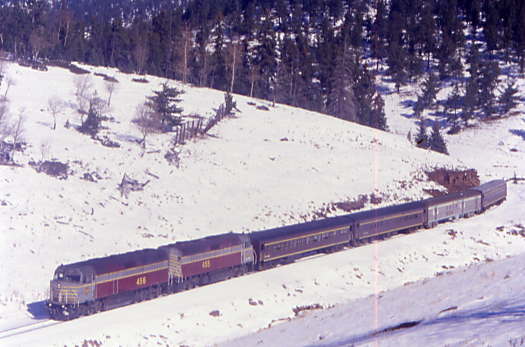
Chris Parker and I awoke at 5:45 AM and after we prepared for the day ahead, went to McDonald's for a breakfast of hot cakes and sausage to go. Inside we met a few other passengers who were getting breakfast. We drove into Alamosa and parked at the station and offices of the San Luis and Rio Grande Railroad, meeting Bart Jennings, and around the corner, met Sarah, who checked us in. I walked across the street to a bench in front of the former Rio Grande station and had my breakfast. The juice was ice cold in the 18 degree temperature, but the hot cakes quickly turned into cold cakes in this pre-dawn. I ate quickly then walked back across the street to wait for our train to arrive. About 6:40 AM, it reversed into the station with everyone boarding.
A pre-dawn photograph of our train, whose consist was San Luis and Rio Grande F40M-2 455 and 456, San Luis and Rio Grande coach RPCX 2968, Union Pacific baggage car 90368 and San Luis and Rio Grande coaches RPCX 2948 and 5060. I boarded the 2948 which was heated and chose my seat then Bart came in and told us of a change of plans for the day. We would first go west to Monte Vista, then east past La Veta and back to Alamosa before proceeding south to Antonito and the south end of the track at the Harborlite plant. At 7:00 AM, we departed and I went to the rear platform of the 5060 to enjoy the sunrise on a very chilly morning.
Alamosa to Walsenburg - Denver and Rio Grande / Denver and Rio Grande Western La Veta Pass Route HistoryThe oldest of the three routes is the one between Alamosa and Walsenburg, over La Veta Pass. The route via La Veta had been considered since the earliest days of the Denver and Rio Grande. Palmer's primary objective, building suth towards El Paso and the Mexican border, was to be reached via the line south to Trinidad and then up and over Raton Pass. However, this route wasn't assured - it was possible that the Santa Fe would build through the pass first, effectively blocking the Grande. So, Palmer decided to build westward as well in 1876. The line was both a feeder to tap the mineral and agricultural markets in the San Luis (and beyond) and a backup plan. Should the Raton Pass crossing fail, the line would simply build southward from Alamosa, following the Rio Grande (river) all the way to the Mexican border and El Paso.
The original narrow gauge route departed the original Denver and Rio Grande north-south mainline at Cuchara Junhction, about six miles east of where Interstate 25 crosses US 160 / Colorado Highway 10 today. The line proceeded west along the Cuchara River, through Walsenburg to the division point of La Veta, Colordo, at the base of the mountains. From here, the narrow gauge went north, roughly following the current US 160 alignment, broke away from where the modern road is about a mile short of the summit to cross South La Veta Pass at 9,380 feet (the new highway uses North La Veta Pass) and then followed Sangre de Cristo Creek down from the pass to (old) Russell and Fort Garland, where it made a straight shot across the valley to Alamosa.
With the north-south main having been dual-gauged in 1888 and then having the narrow gauge thrid rail pulled in 1890, it was only a matter of time until the line over La Veta was also standard-gauged. Standard gauge rails had been extended as far as La Veta by 1890 and if the pass and line to Alamosa weren't also converted, there was just too much traffic going in and out of thte valley that had to be transloaded at La Veta. However, the old narrow gauge alignment between La Veta on the east and just beyond Russell on the west was unsuitable for standard gauge track - too steep with four percent grades, and too many sharp curves.
As a result, a new narrow gauge line was built north of Alamosa to Villa Grove on the Tennessee Pass route. However, traffic volumes continued to booom in the San Luis Valley and a new lower-grade was completed in 1899 across what is commonly known as Veta Pass, about nine miles south of the original mountain crossing and about 100 feet lower, a 9,242 feet above sea level. The new grade diverged from the old narrow gauge route just west of La Veta and followed Middle Creek up towards the summit. On the west side, the route followed Wagon Creek (aka Wagon Wheel Creek) down, rejoining the original alignment just below Russell - where the tracks rejoin Highway 160 today, since the highway is built on the old narrow gauge alignment. The old narrow gauge route was largely torn up in 1902, except for a seection on the west side between the Placer Spur junction near Russell and where the new mainline rejoined the old route. Also, the Denver and Rio Grande stone depot at the original Veta Pass still stands.
The Veta Pass Route is one of the least explored and least accessible sections of the standard gauge Rio Grande network. Most of the route is away from even the most primitive of roads or inside the Forbes Trinchera Ranch, closing off accss to most. There was some amount of mining activity along the line. Near the east end, the Denver and Rio Grande/Denver and Rio Grande Western Loma Branch diverged from the route at Walsenburg, running northwest to a series of coal mines. The original nrrow gauge line over La Veta Pass connected to the Placer Spur (aka the Grayback Branch) near Russell. Once it was replaced by the newer standard gauge route, two more branches were spawned - the Tropic Branch and the Reliance Branch, both coming off the route near La Veta to serve coal mines.
In addition to the Denver and Rio Grande/Denver and Rio Grande Western spurs, the narrow gauge Trinchera Estates Railroad connected near the loop atop Veta Pass, running south to various logging facilities and a mill at the far end of the line. Also, between 1902 and 1909, the narrow gauge Bald Mountain Railroad connected at Old Occidential, ran down and across Middle Creek, and then back up the north side to service the Occidential Mines. The total length was about two miles between the Denver and Rio Grande interchange and the mine.
In 1911, 20 years after standard gauging the Rio Grande's original Pueblo-Trinidad line, the section from Cuchara Junction north to Puebelo was replaced in function by a new, improved double track line, constructed and operated jointly by the Colorado and Southern and Denver and Rio Grande. The actual Denver and Rio Grande line itself was removed in sections, first being severed in 1924 and the last section - between Lascar and Cuchara Junction - being remvoed in 1923. The Pueblo-Trinidad line south from Cuchara Junction to Trinidad lasted a few more years, not being removed until the 1936-1937 timeframe and the Denver and Rio Grande Wstern then reaching Trinidad via the Colorado and Southern trackage rights south of Walsenburg. After these changes were made, the line over La Veta left the joint trackage at Walsenburg, just as it does today.
The line passed from the Rio Grande to the Southern Pacific as part of the merger in 1988, and then to Union Pacific in 1996. On June 29, 2003, the La Veta Pass line, along with the rest of the San Luis Valley Lines (the Antonito Branch and the Creede Branch), were purchased by RailAmerica from Union Pacific and made into the San Luis and Rio Grande Railroad, a shortline. They continued the same basic opertion as Union Pacific, running over Veta Pass largely at night. During December 2005, the San Luis and Rio Grande was sold to Iowa Pacific Holidings, LLC and Permian Basin Railways, but operations remain largely unchanged.
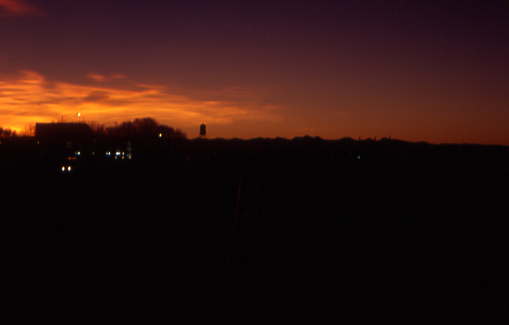
The sunrise began as we went over a grade crossing with third rails left over from the old dual gauge of the Denver and Rio Grande.
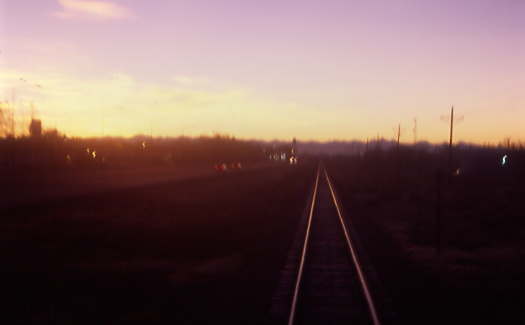
The rails gleamed in the pre-dawn light.

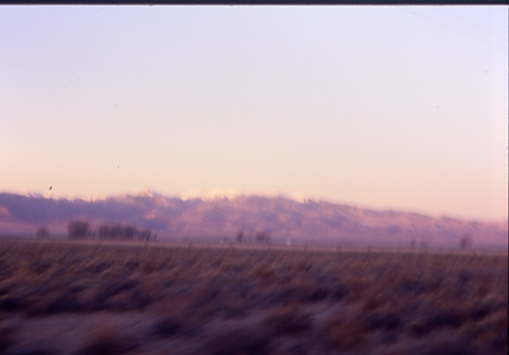
As the sun rose, the mountains to the southwest were pink.
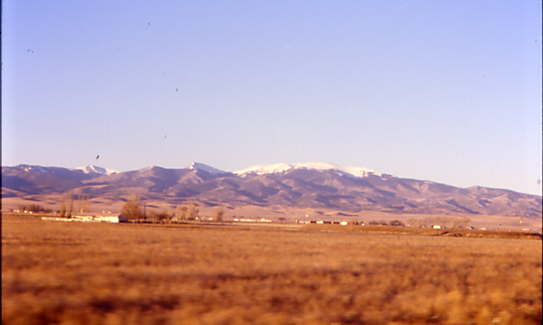
The view of the same mountains a few minutes and miles later.
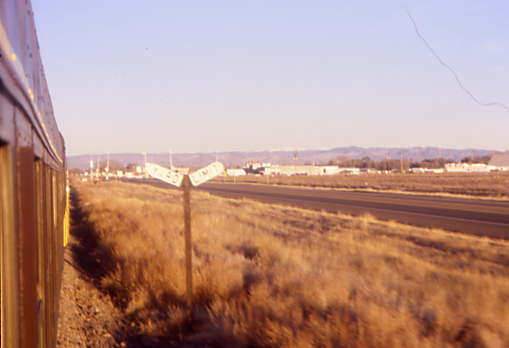
Later we came to the Yard Limit sign for Sugar Junction, the connection to San Luis Central Railroad, which once had rights on into Monte Vista.

Passing Sugar Junction.
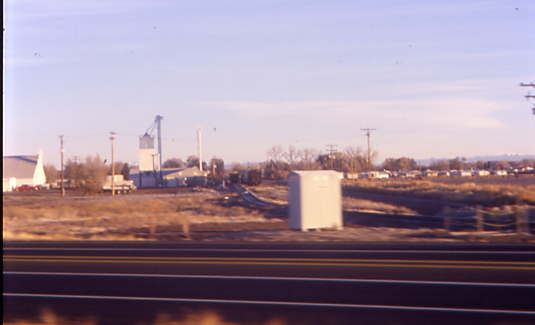
Freight cars on the San Luis Central Railroad, which we will be riding over tomorrow.
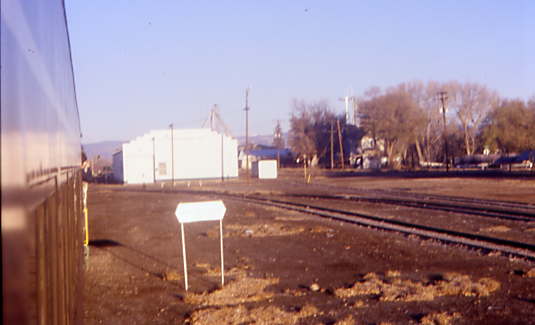
We arrived at Monte Vista where the power would run around the train and a photo runby would occur.
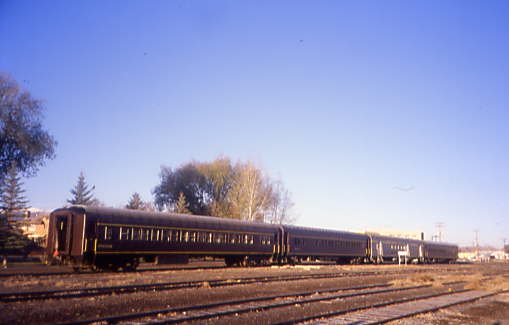
Our train cars wait for the power to be run around them.
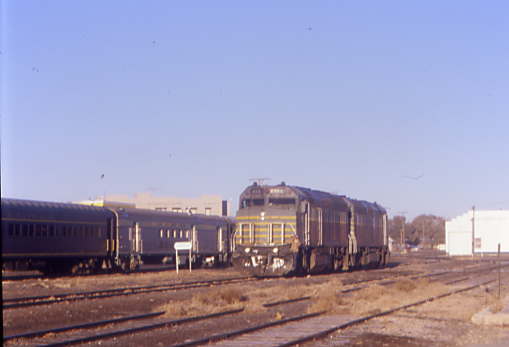
The power running around our train.
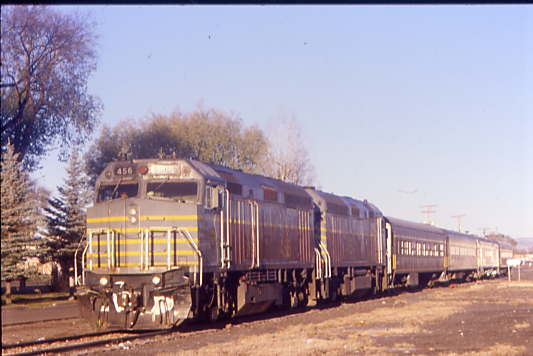
With the power now reconnected, San Luis and Rio Grande F40M-2F 456, ex. Canadian-American 456, nee Amtrak F40PH 378 built by Electro-Motive Division in 1981, now led the train east towards La Veta.
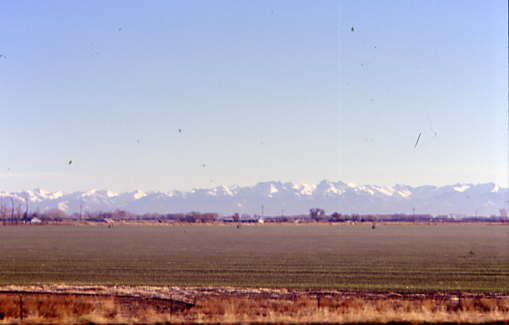
One could see the mountains north in the distance. The San Luis Valley is larger than the State of Connecticut.
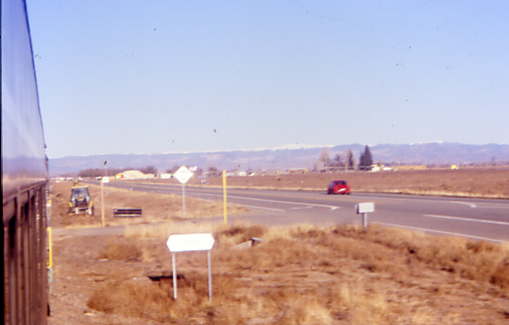
Our train followed US 190 back toward Alamosa.
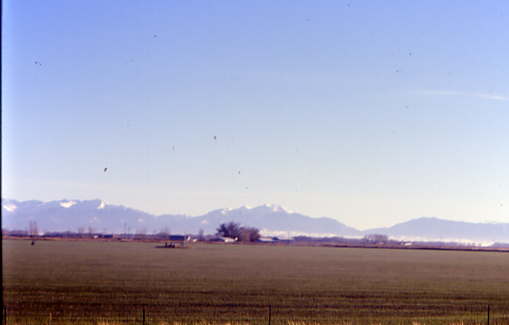
The view looking up the San Luis Valley north.
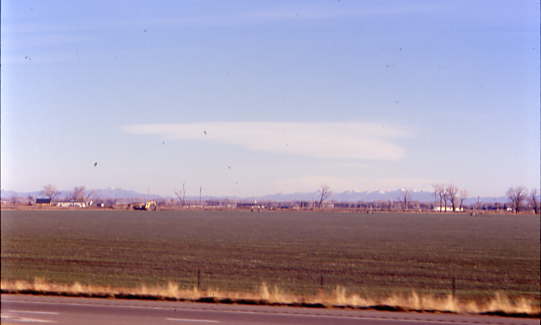
It is a very unique alpine valley.
We passed the Best Western Alamosa Inn where Chris and I were staying.
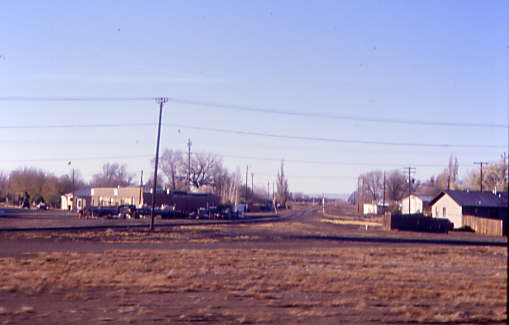
We continued into Alamosa and passed the junction with the line to Antonito which we would take later this afternoon.
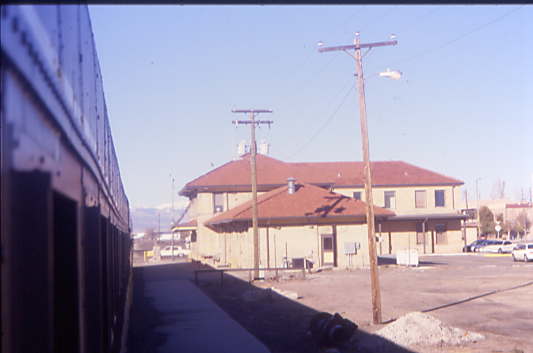
We stopped at the former Rio Grande station to pick up some local officials from the Alamosa Chamber of Commerce.
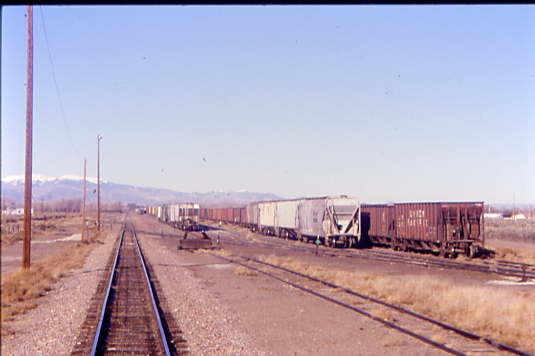
After departing, we went through the yard before crossing the Rio Grande River.
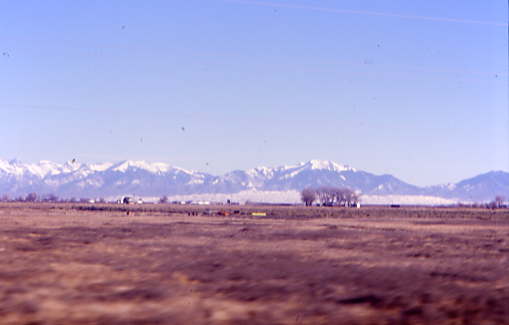
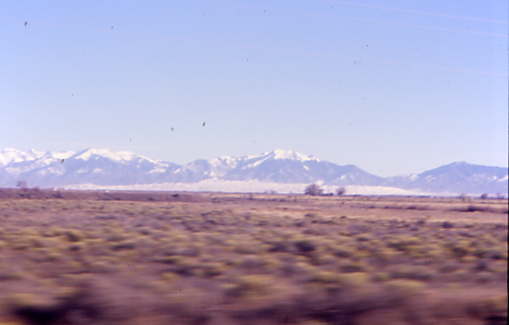
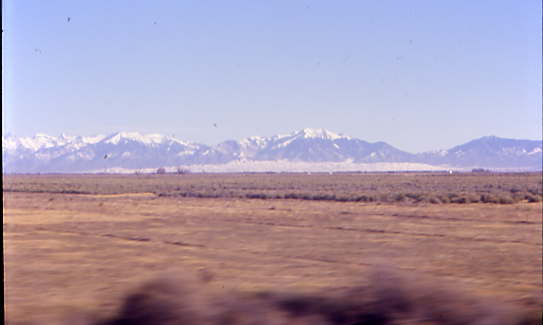
The train crossed the San Luis Valley and to our north, the Great Sand Dunes National Park was visible, but covered with snow.

As we neared Blanca, I was sitting in the rear coach all by myself and closed my eyes and felt like I was riding on the San Juan Express back in the 1930's.
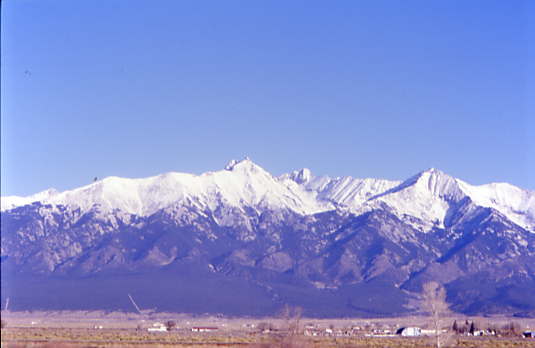
Mount Blanca watching over the San Luis Valley before we went through Blanca at Milepost 232.4
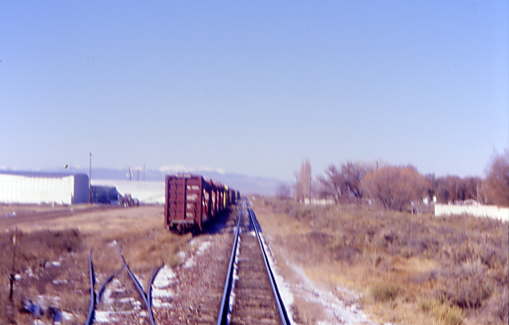
Later we passed through Fort Garland at Milepost 227.7, named after the original Fort Garland, a fort built in 1858 to protect settlers in the San Luis Valley. Named after Brigadier General John Garland, the fort was once commanded by Kit Carson. The fort has been rebuilt and is open as a museum.
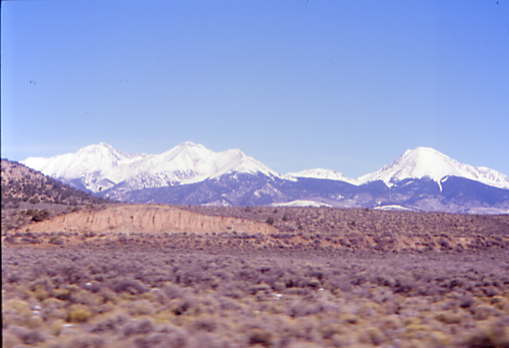
The mountains to our southeast.
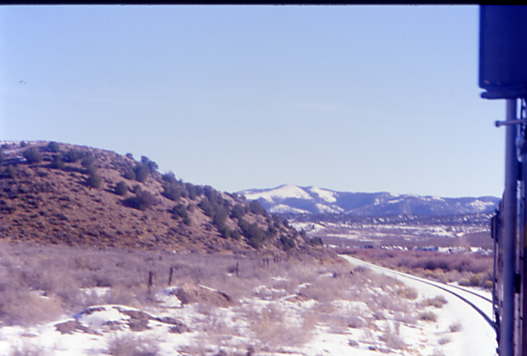
The train approached the first hillside as we started the climb over La Veta Pass.
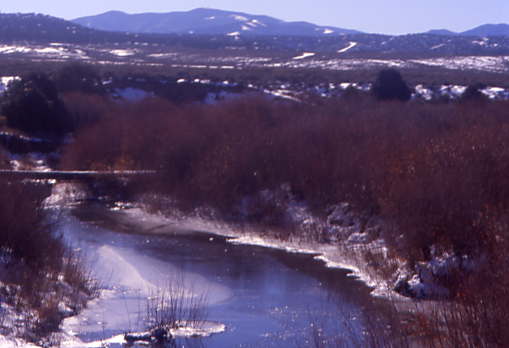
The route followed Sangre de Cristo Creek which we would follow to Wagon Creek.

Paralleling Wagon Creek.
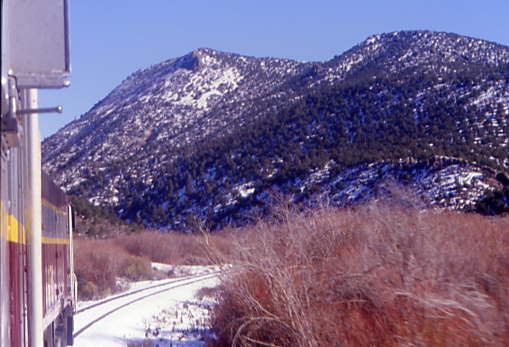
We now started to turn and climb out of the San Luis Valley.
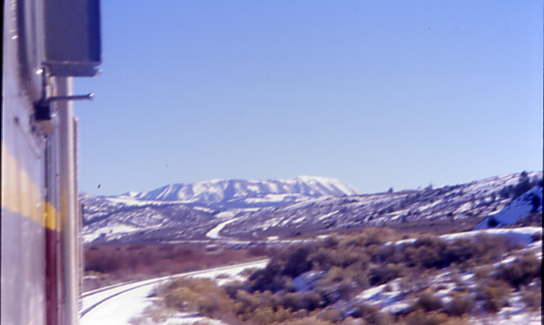
Making our way into the snowy mountains.
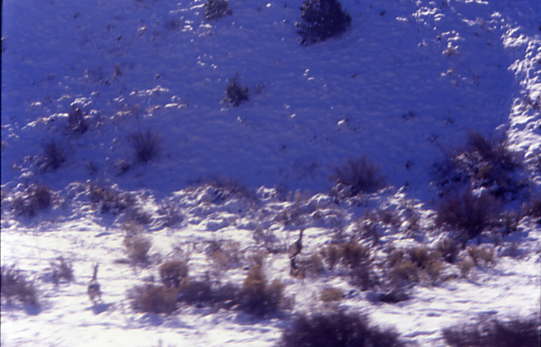
We startled some deer who quickly ran away from the tracks.
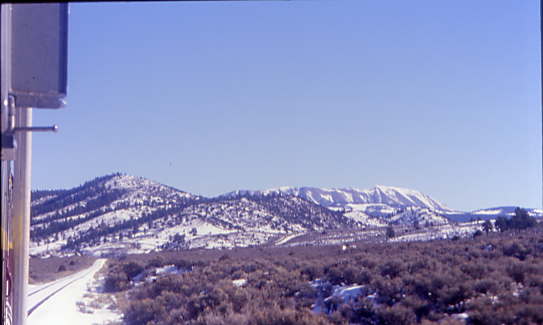
Approaching Russell at Milepost 216.9, where the original 1876 narrow gauge rail line turned left to climb over South La Veta Pass. It was over four percent in places and had major curves. The new standard gauge line was built over La Veta Pass in 1899 on a lower grade. That is why we turned to the right. The old narrow gauge line followed the route of what is today's US 160 up the west slope of South La Veta Pass.
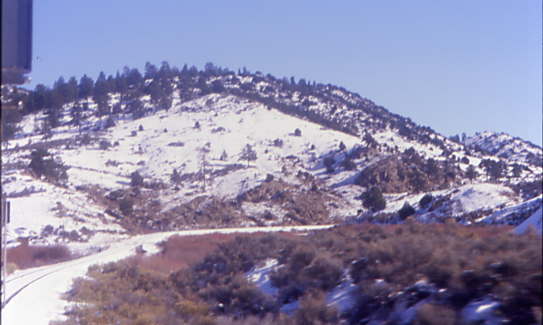
As we followed Wagon Creek, there was a great view looking back as we climbed higher with the mountains behind.
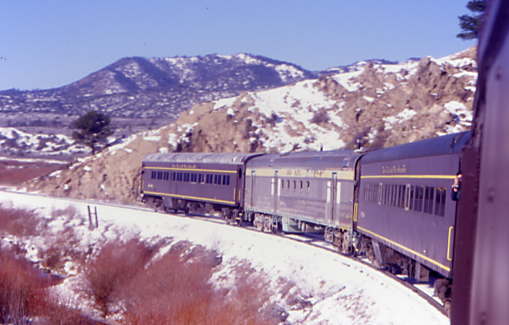
The view to the rear as we contiued our ascent.
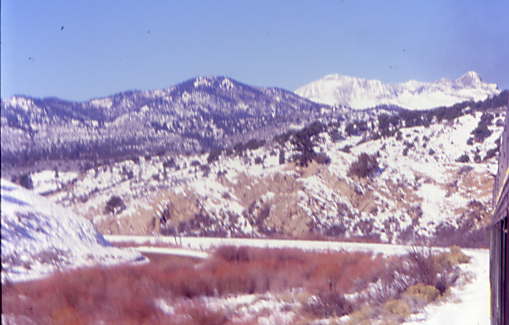
What a fantastic view as we continued our climb.
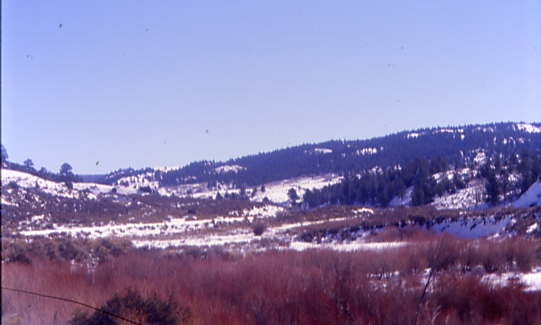
The route ahead.
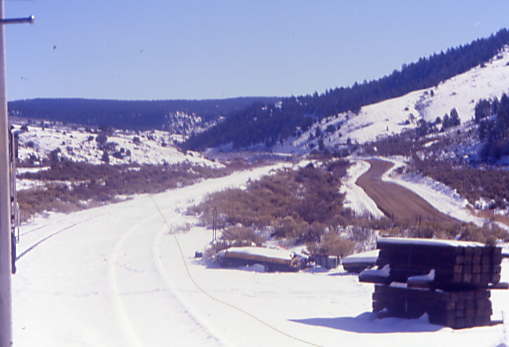
At the 3,400 foot long Sierra siding, there were wooden ties were waiting to be installed. At one time, there was also a wye, an important location when helpers and freights were common on the hill. Sierra, once called Blanca, also featured a water tank, section and bunkhouses and a coaling facility.
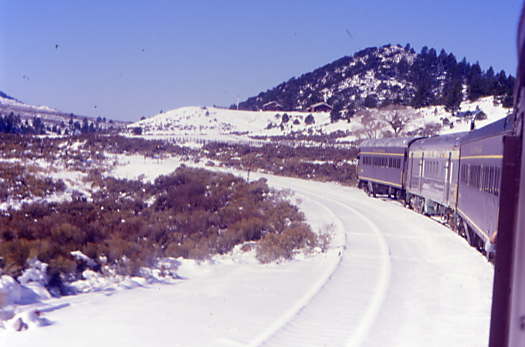
The train at Sierra, Milepost 214.6.
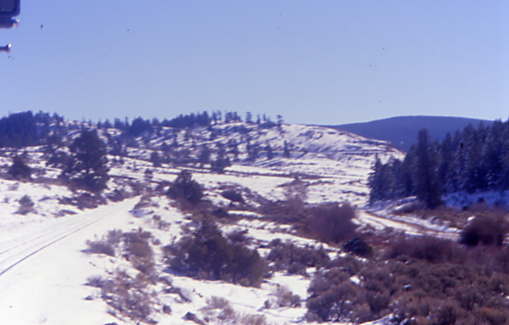
The view ahead as we continued to climb.
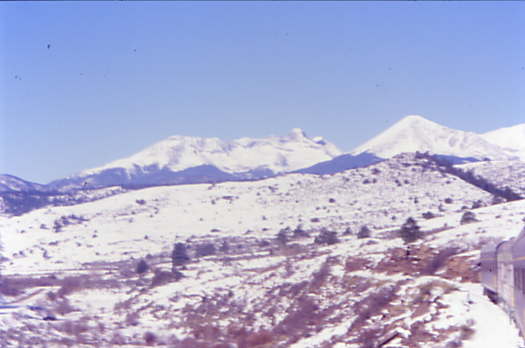

There were breathtaking views looking down the grade behind us.
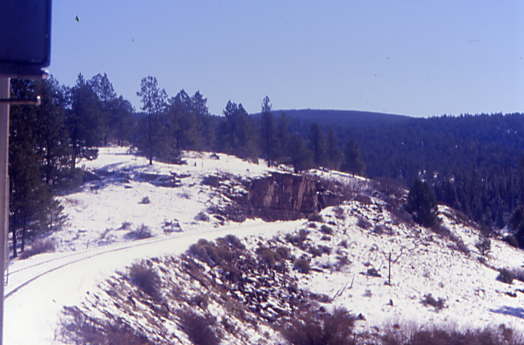
Passing through a rock cut.

A look back after passing through it.
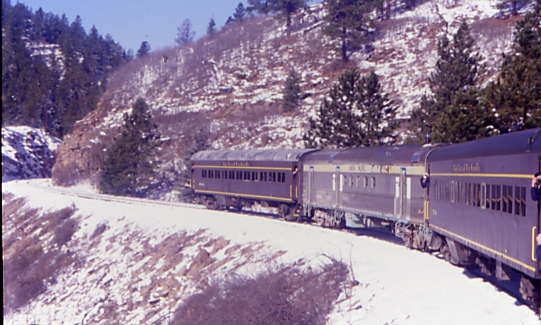
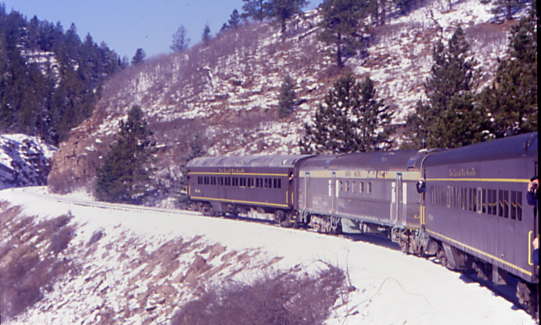
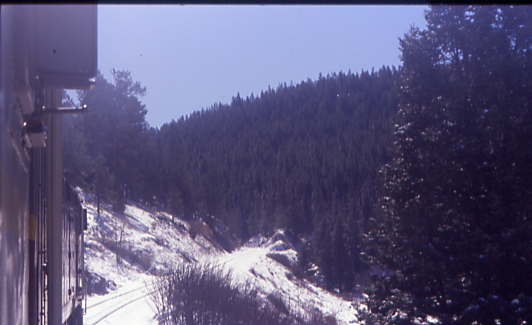
Rolling high along a rocky ledge.
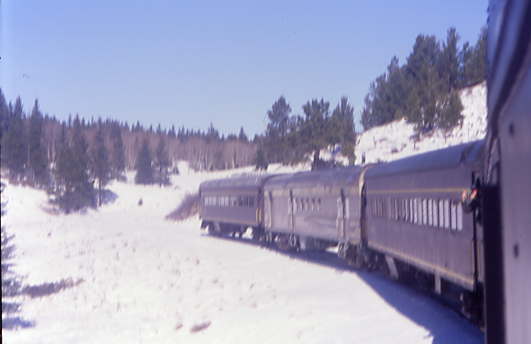
Another rear-facing view as the train rounded the 12 degree loop below Fir/La Veta Pass.
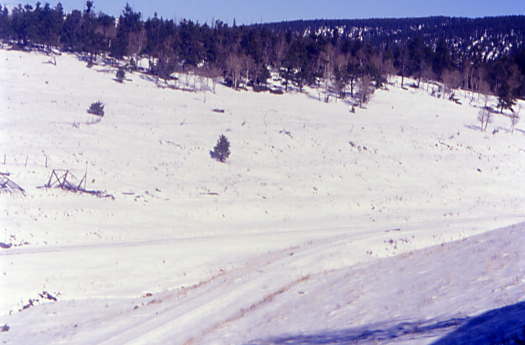
Here, there is the former track for turning helpers and snow equipment.

The view looking down at where we had been. We all detrained for a very unique photo runby at Fir.
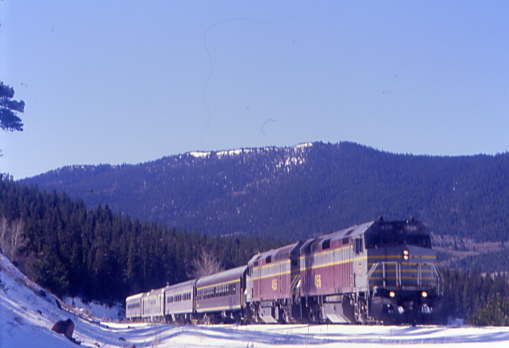
The train reversing by our photo line. Then everyone moved over to watch the train reverse around the loop and pass below.
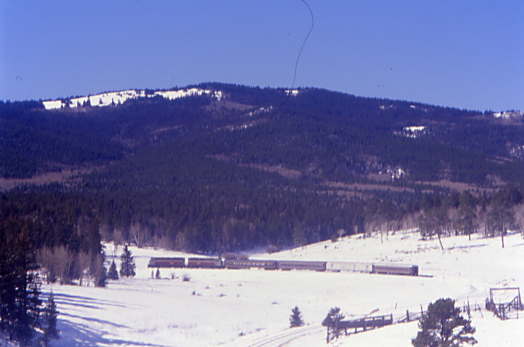
Next the train reversed down the 12 degree loop before it left the loop.
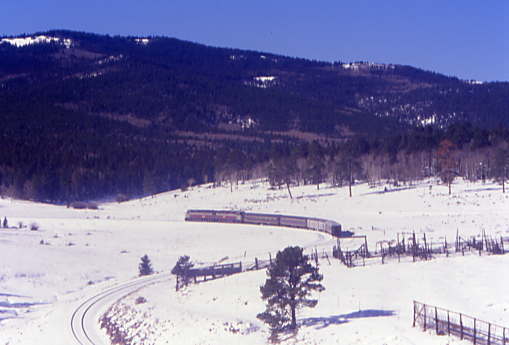
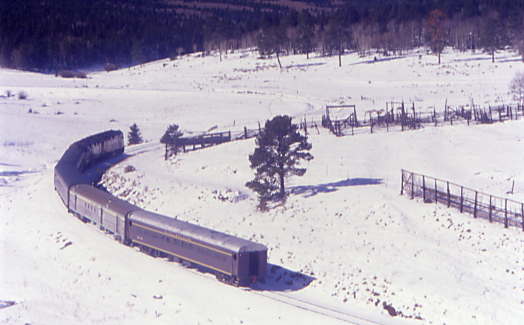
Still reversing out of the loop.
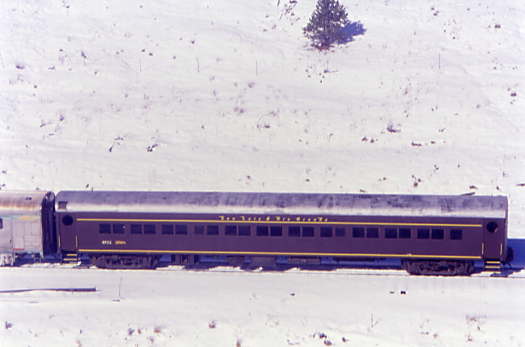
San Luis and Rio Grande coach RPCX 2968, nee Long Island Railroad 120 seat coach 2968 built by Pullman-Standard in 1956.
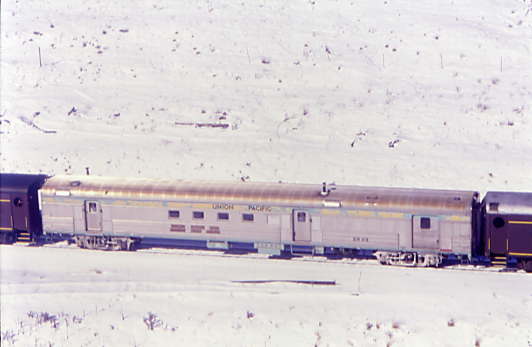
Union Pacific railway post office/baggage car 90368.

San Luis and Rio Grande coach 2948, nee Long Island Railroad 120 seat coach 2948 built by Pullman-Standard in 1956.
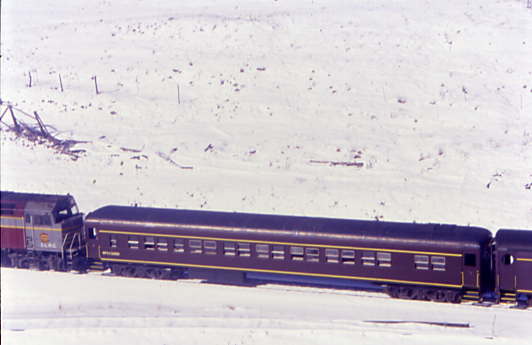
San Luis and Rio Grande coach 5060, ex. Canadian National 5060, nee Canadian National 5199 built by Canadian Car and Foundry in 1937.
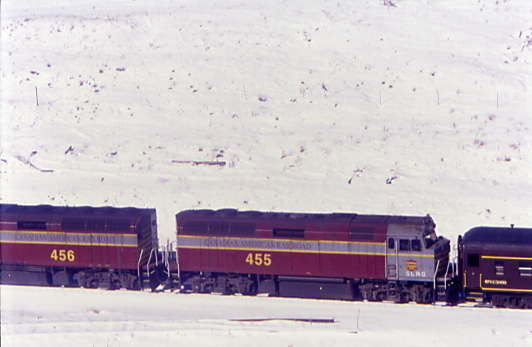
San Luis and Rio Grande F40M-2F 455, ex. Canadian-American 455, nee Amtrak F40PH 455 built by Electro-Motive Division in 1977.
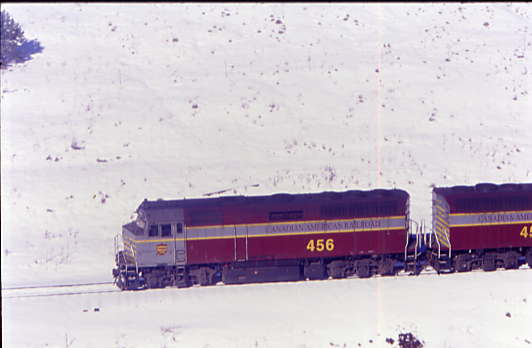
San Luis and Rio Grande F40M-2F 456. The train continued to reverse around the corner and disappeared out of sight.
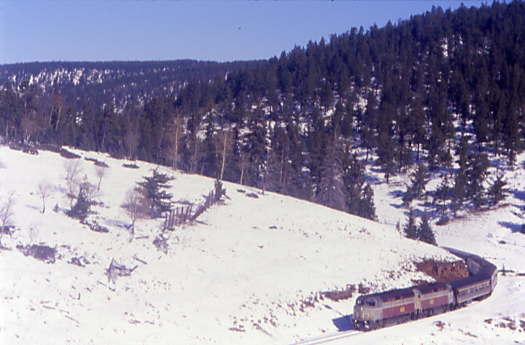
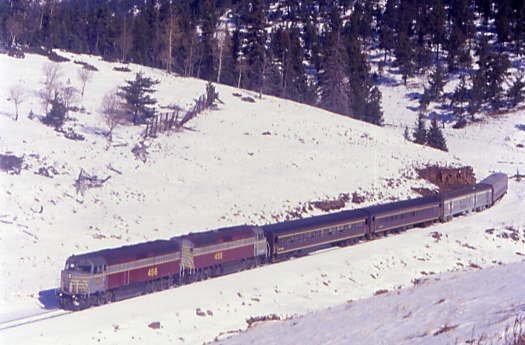


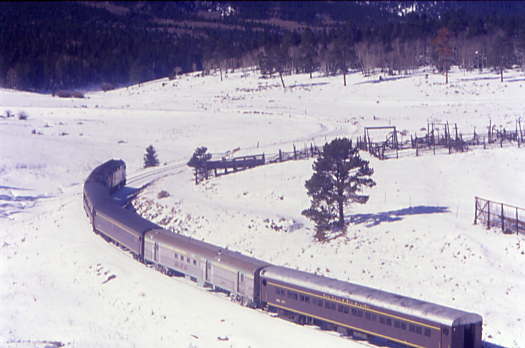
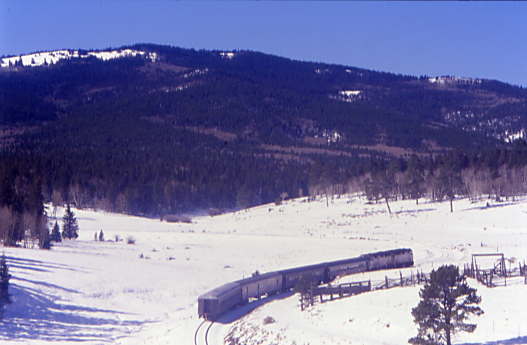
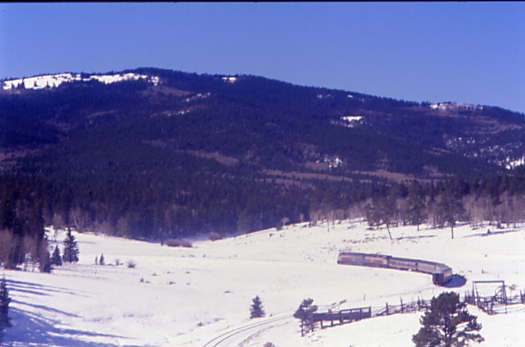
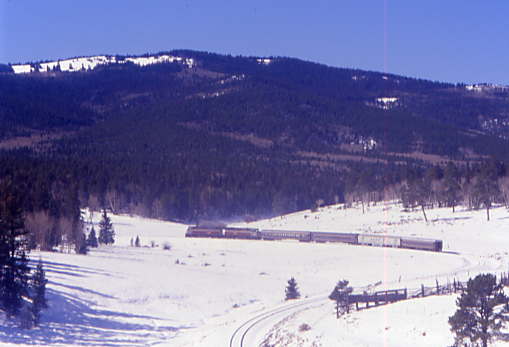
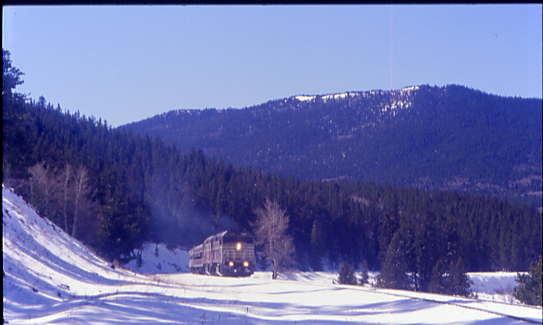
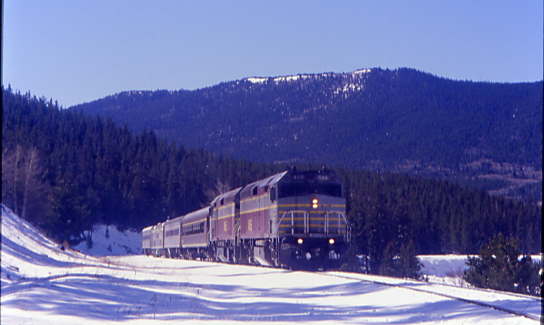
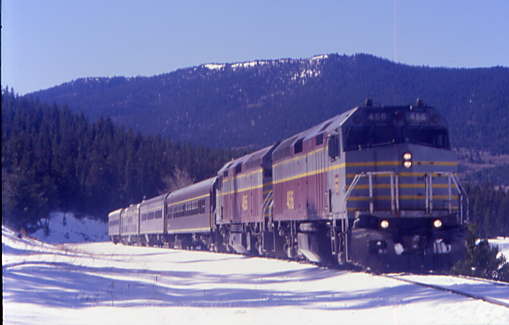
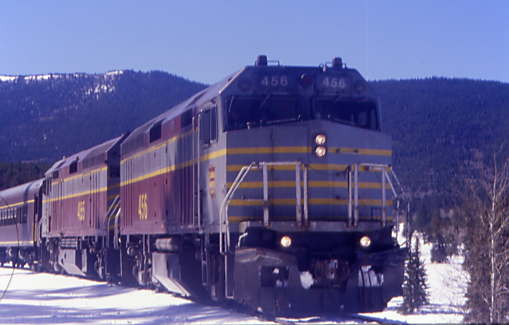
The fantastic photo runby at Fir, after which we crossed the 9,242 foot summit at Fir/La Veta Pass.